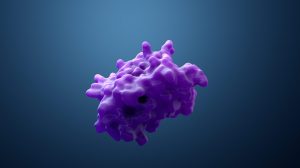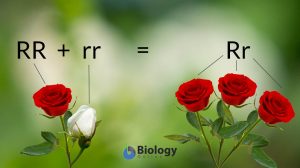Table of Contents
Definition
noun
plural: nuclear pore complexes
ˈnu kli ər, pɔː ˈkɒmplɛks
A complex of nucleoporins resulting in the formation of nuclear pore in the nuclear envelope
Details
Overview
The cell nucleus is the organelle of the eukaryotes responsible for maintaining the integrity of DNA and for controlling cellular activities such as metabolism, growth, and reproduction by regulating gene expression. It is a double-membraned organelle and this double membrane is referred to as nuclear envelope (also called nuclear membrane, plasmalemma, sor karyotheca). The nuclear envelope surrounds most of the eukaryotic cell’s genetic material as opposed to the genetic material of the prokaryotes that is not membrane bound. The nuclear envelope is a lipid bilayer and has many perforations. These perforations are called nuclear pores. Each nuclear pore is formed by the assembly of nucleoporins called the nuclear pore complex. The pores prevent the easy movement of molecules between the nucleoplasm and the cytoplasm. Consequently, the nuclear envelope is impermeable to large molecules. Thus, it separates the contents of the nucleus from the cellular cytoplasm and allows entry of selected molecules.
Features
The nuclear pore complex is made up of protein units called nucleoproteins. There are at least 456 nucleoproteins that make up the nuclear pore complex. In vertebrates, the nuclear pore complex is about 120 nm in diameter.1 The nucleoproteins assemble in such a way that a nuclear pore is formed. The nuclear pore is octagonal in shape and measures about 9 nm in diameter and with a depth of about 200 nm. Through the nuclear pore, biomolecules may pass through. Thus, nuclear pore complex is involved in the transport of biomolecules into and out of the nucleus. There are numerous nuclear pore complexes that form in the nuclear envelope, i.e. about two thousand in average. These pores allow the passage of molecules into and out of the nucleus. Examples of molecules that pass through these pores are ribonucleoproteins, DNA polymerases, lipids, signaling molecules, and carbohydrates.
Common biological reactions
Common biological reactions
The presence of the nuclear envelope prevents the easy passage of large molecules (e.g. proteins and RNA) into and out of the nucleus. Although the nuclear envelope is perforated with nuclear pores, large molecules would still need a nuclear transport mechanism in order to enter and exit the nucleus. Small particles (< ~30-60 kDa), such as ions, can pass through the nucleus by passive transport. However, cargo proteins and RNAs that need to be transported require importins and exportins to enter and exit the nucleus, respectively. On one hand, the cargo binds with the importin in the cytoplasm, and then moved into the nucleus through the nuclear pore. On the other hand, the cargo binds with the exportin inside the nucleus, and then moved outside the nucleus via the nuclear pore. Nuclear transport needs energy to proceed. Thus, GTPases (e.g. Ran enzyme) help by hydrolyzing GTP (guanosine triphosphate) so that energy would be released in the process. The energy released would be used to dissociate the cargo from the importins and to bind the cargo to the exportins.
Biological functions
These nuclear pore complex forms the nuclear pore that allow the entry and exit of select biomolecules. For instance, ribonucleoproteins leave the nucleus whereas certain proteins (e.g. DNA polymerases), carbohydrates, lipids, and signaling molecules enter the nucleus through the nuclear pores. The nuclear pore complex is said to carry out about 1000 translocations each second.
Supplementary
Abbreviation
- NPC
Further reading
See also
- nucleus
- nuclear envelope
- nuclear pore
- nucleoporin
Reference
- Winey, M., Yarar, D., Giddings Jr., T. H., & Mastronarde, D. N. (1 November 1997). “Nuclear Pore Complex Number and Distribution throughout the Saccharomyces cerevisiae Cell Cycle by Three-Dimensional Reconstruction from Electron Micrographs of Nuclear Envelopes”. Molecular Biology of the Cell. 8 (11): 2119–2132.
© Biology Online. Content provided and moderated by Biology Online Editors







